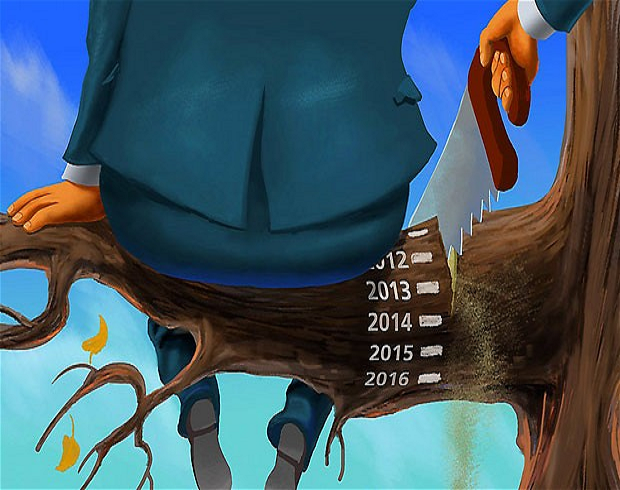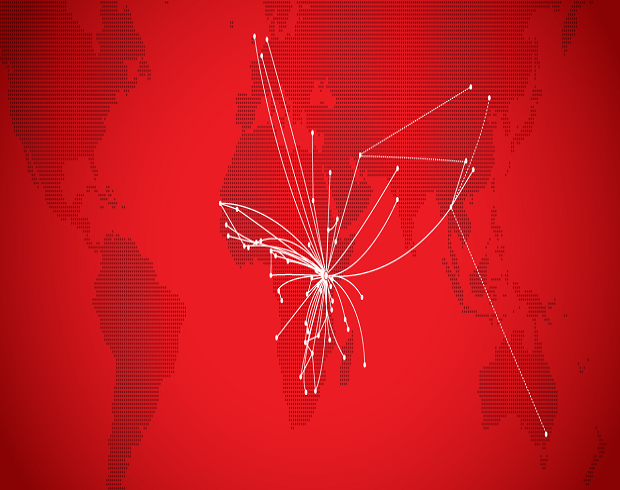[vc_row][vc_column width=”2/3″][vc_column_text]A distraught investor called his financial advisor. “Is my money really all gone?”
He wailed. “No, no,” the advisor answered calmly. “It’s just with somebody else!”
I need to disabuse some readers of the notion that banks are charitable institutions. The amount of energy spent chanting dirges about how “banks are out to fleece us” or the more recent, “banks want to finish Kenyans with interest rates” is energy better spent understanding that a bank is a business like the neighborhood kiosk, providing a service of convenience. The less than palatable solution to the purveyors of negative energy is this: put your spare cash under your mattress and go borrow your financial needs from the knee-cap breaking shylock two streets down the road from your house. Enough said: if you’re mildly irritated at my incendiary introduction, let’s keep rocking and rolling as I explain why you need to get over yourself.
The months of September and October 2015 were difficult ones for the Government of Kenya. Cash flows got mismanaged as more money was being paid out than was being received and they had to come to the domestic market to borrow funds to meet their obligations. Bank treasurers as well as savvy institutional investors smelt blood in the water. They had already done a quick back of the envelope calculation on the use of the proceeds from the now infamous Eurobond and figured out that the government had come up short when there were multiple domestic as well as international obligations to be paid. These things really don’t require a rocket scientist, after all, housewives have been calculating and balancing kitchen budgets for years. Word soon spread that the government needed money, and banks as well as institutional investors were happy to step up to the plate. But remember that banks place your deposits in two places: in loans to businesses and individuals or in loans to government via treasury bills and bonds.
Two things will always happen when the government suddenly becomes exceedingly thirsty for cash and dips its beak into the private sector. Firstly, the arbitrage sharks that are always looking for an opportunity will strike. If an individual or corporate with a good credit history at their bank can borrow at 12% as was the case with some, then they will borrow and take the money to the government via the T-bill auction that was giving rates above 22%. That 10% spread is easy money. So easy that the bank’s initial reaction will be to raise interest rates to reduce the arbitrage opportunities that it is providing to some of its clients. Which then leads to the next question, why should the bank be the only one allowed to make money from government borrowing? Well, the fact is, everyone who was flush with cash and spotted the opportunity jumped into the high interest rate bandwagon. Large depositors demanded that the banks give them double digit interest rates or they would withdraw their funds and open CDS accounts at the Central Bank themselves in order to buy government paper. I know an individual who got 19% on his large deposit at a multinational bank in September this year. Now if you recall, I did say that banks fund their loans from customer deposits. When a large number of deposits start to re-price, the obvious impact will largely be on the future loan book that will be funded from the re-priced deposits. There is also an impact on the existing loan book because a bank is constantly trying to manage the profitable bridge between interest received (from loans) and interest paid (on deposits). The net interest income will obviously be impacted from the re-priced deposits. And banks are accountable to shareholders you know, the owners of the business who are demanding a return on their heavily regulated capital.
A final point to the business of banking: contrary to popular belief, it is not all champagne and roses when banks have to consider raising interest rates. The credit risk director will typically sit through that Assets and Liabilities Committee -ALCO meeting (assuming he’s invited) with a furrowed brow and a sinking feeling in the pit of his stomach. Why, you ask? The credit director knows very well about the elasticity of the borrower’s pockets. There is only so much stretching a borrower can do before he decides to throw in the towel and default on a bank loan that is causing more grief and sleepless nights than a private developer’s illegal boundary walls coming down. A borrower has typically submitted cash flow projections to his banks demonstrating that he can comfortably make the principal plus interest repayments over the lifetime of the loan. A minor rate increase will cause some level of digestive discomfort. A major rate increase will cause cardiac level discomfort. Which is why banks ask individual borrowers for their pay-slips and information about other borrowings so that they can tell what the “debt service coverage ratio” is for the individual borrower. How much of her disposable income is going towards servicing loans? The rule of thumb is that it should not be beyond 30% of one’s net income which allows one to pay rent, buy food and basically live decently rather than skating on the edge of financial despair. The same applies for business loans, as there is an ideal leverage ratio for businesses that are in the manufacturing or in the service industries (manufacturing businesses are permitted higher leverage ratios due to their propensity to use loans for purchasing capital equipment).
Therefore it’s not an easy ALCO decision to raise interest rates as the bank will be balancing a need to maintain the net interest spread while managing the increased risk of borrower default. Since the escalated government borrowing had cooled down in November, the banks last week could thus start to yield to the Central Bank Governor’s exhortations to stop loan interest rate increases. Total relief in sight for distraught borrowers!
[email protected]
Twitter: @carolmusyoka[/vc_column_text][/vc_column][vc_column width=”1/3″][/vc_column][/vc_row]

 carolmusyoka consultancy
carolmusyoka consultancy
 @carolmusyoka
@carolmusyoka


